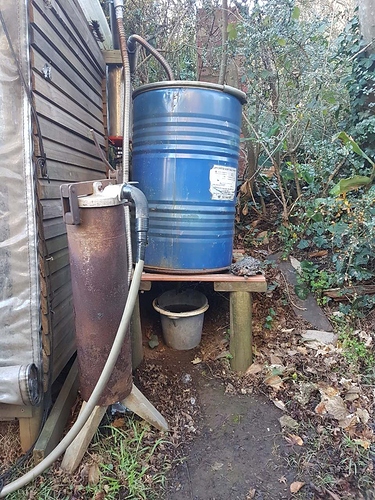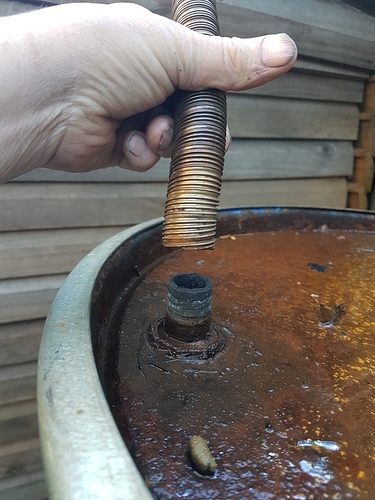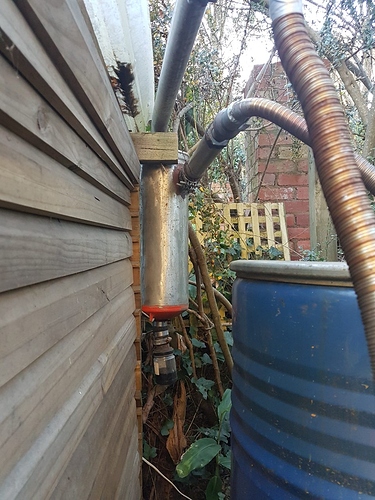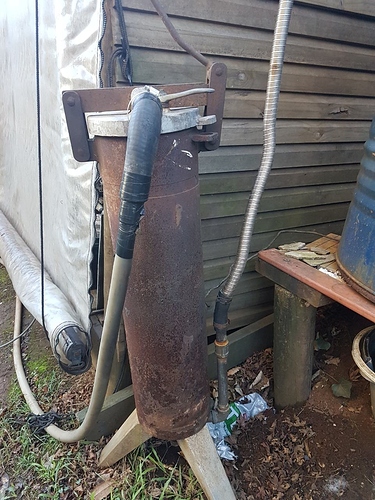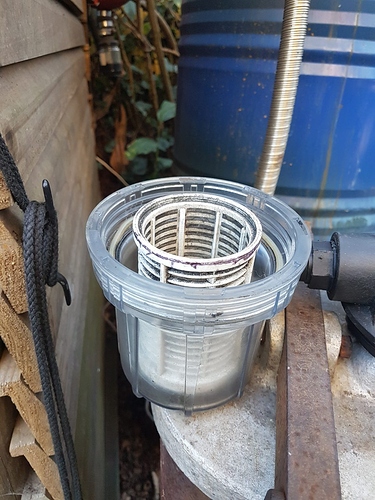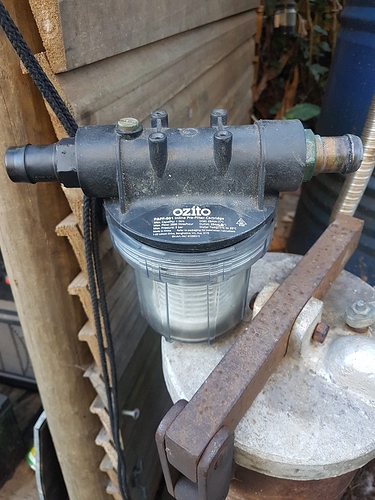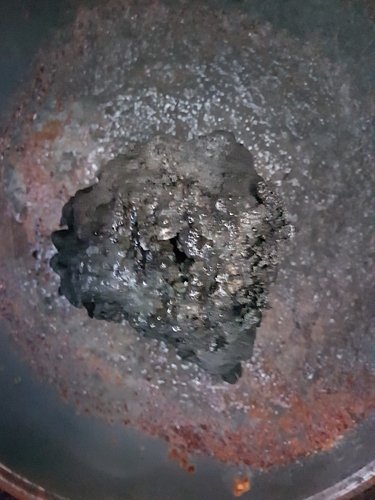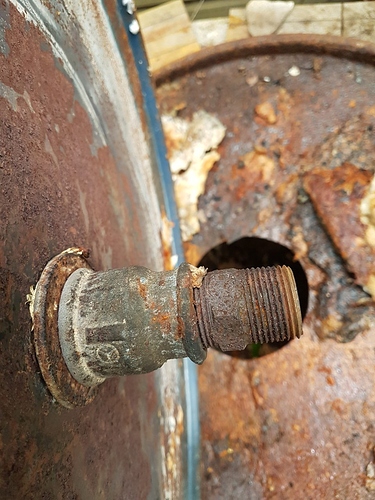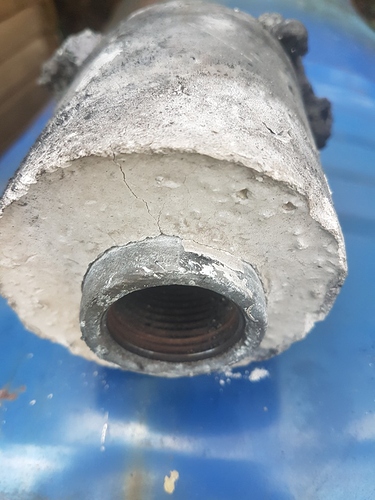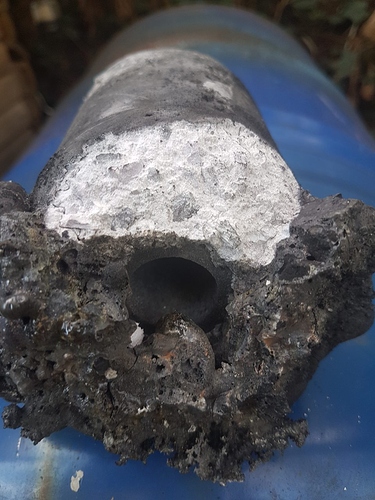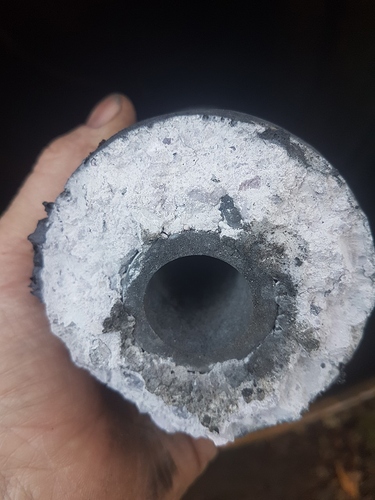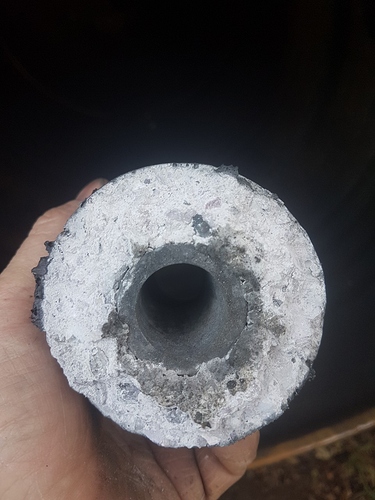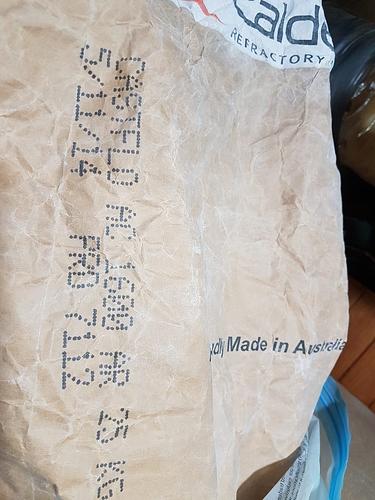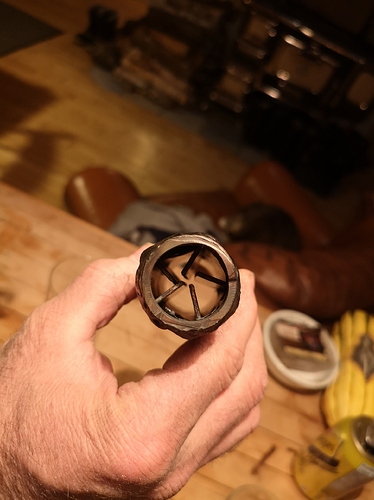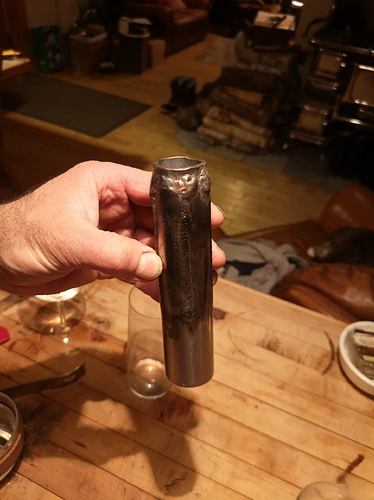Hi Dave, I hope all is well down under. It must be getting cool there. Have you been able to try the new tungsten nozzle?
Hi Bruce , no not cool ,but freezing at the moment ! , i am still running the old nozzle the hexoloy silicon carbide tube one that i put in around Oct / last year , in fairness we have not had as many cloudy days since then and so i guess this nozzle has only had around 60 hours since then , last week i once again struggled to get the gasifier running and so decided to tip it over and empty out about 150 liters of charcoal from the drum , and yes once again i had a volcano sat over the nozzle blocking the char from lighting up properly , thinking that my nozzle was probably toast as well i gave it a big whack from above to remove it and low and behold the nozzle still in place down below was still in great shape , so i decided to let sleeping dogs lay and refilled drum and carry on running this before changing over to the ones you supplied , and looking at them i feel that they also will work well , but i like to run till destruction before chopping and changing , but as soon as i put it in the new one i shall let you know .
Dave
Dave, Thanks for the update. I hope you get plenty of sunshine and never have to test the new nozzle. Grace & peace, Bruce
Thanks Bruce , i ran the gasifier right down on fuel yesterday till it was so hot the rain water on the lid was starting to boil , as soon as the rains and wind die down here i shall open it up again and make a few changes inside my reactor that i have been working on , if the nozzle still looks ok i shall just keep running it for a while longer , but i am really keen to try the other nozzles in a new down draught unit that i am collecting bits for . but one way or another i shall use them on one of then units for sure
Dave
Dave,
I have just been looking back through this topic to learn more about how your gasifiers are set up. Have you shared anywhere how the bottom of your reactor is set up as far as how the plumbing is attached and arranged on the inside and out? Also I’d be interested in knowing what your filtering system consists of. it seems your system is a workhorse of sorts and I was just wondering what set-up has proven to be durable enough for daily use. Photos and a walk-around video would be nice whenever you might get the time.
I don’t want to miss what Koen just shared under “Some school in Thailand.”
Hi Steve , i am in the process of changing a few things on my setup ,so that may be the time to try and get some photo’s of the nozzle and how its set up through the drum , but in the mean while its so simple i don’t get the chance to update the build that often and while its working so well i leave it alone , we are going to have a sunny day today , so if i get a chance today i will empty my drum of charcoal and show you the inside and how the nozzle sits inside , i am sure it will have another build up of molten slag around it so you should get the idea and the only downside to me not using water drips or egr , is that i have to poke through the slag formation after a week or so from below , or do what i will do today and empty drum and take it out .
As for filtering i used to have just a simple 5 gallon plastic screw lid container filled with lambs wool and connected with plastic hose pipes , but it was only good if you ran for about 3 hours and then it was starting to get too hot , so i now use a 1 inch flexi stainless steel out of the lid of the 55 gallon drum over to a cyclone that helps drop the fines out before i send it down to my small gasifier that is now being used as a filter tank , its 8 inch dia by about 3 foot high made of mild steel with a aluminum lid where the gas comes out having passed through open cell / and a layer of lambs wool with a pile of pan scrubbers sat on top to save sucking anything up into the plastic oulet pipe that then goes for about 5 foot to a in line fine filter and then into the air mix valve and engine’s .
I just nipped out side and took a few photo’s to explain my ramblings better .
This is the 55 gallon drum with everything in place
this is the lid and outlet pipe , you can see how discolored the stainless pipe gets when its been run for 5 or 6 hours loses that lovely new shiny look
This is my small gasifer i use for running very small engined generators , but not used it in ages so now its a extra filter .
 nozzle. My plan is to use a 1-1/2" schedule 80 pipe then lay a 1" round copper bar (or other long hunk of scrap copper) inside to “pump” heat from the nozzle to outside the reactor.
Hi Bruce, can you draw up a skech? Not quite picturing this in my head of what you are talking about. Thanks.
Bob
My concern with that plan is, there wont be enough contact beteen pipe and copper to transfer heat between them effectively. Also, the copper will be laying on the bottom, but the max heat is on the top.Then again, the sch 80 pipe has been proven to work on its own.
How much of the heat in the pipe might be radiant heat too? I think it should improve heat transfer. It’s an essy essy experiment anyways.
What about going the other way, are there pipe sizes where copper could clad a steel pipe?
Andy and Garry,
Thanks for helping me think about this. This morning some of my pieces of junk bumped into each other in my imagination. I have a tall military surplus ammunition can (30" X 6" X 11") that I’m thinking about using as a test reactor. I’m thinking of placing two 1-1/2" schedule 80 pipes parallel and five inches apart across the bottom and through both sides of the can. With a 1/2" hole in the middle top of each pipe and each one brazed where they pass through the can walls. This will give me multiple options for testing.
For a helpful update on charcoal nozzles see posts 255-260 in Toyota Corolla Vehicle Gasification Project. There Steve Bowman gives pictures and discusses the Leitinger nozzle with the inventer.
here is the new gas generator nozzle for my pickup
I still have to build a fixing plate and a closure cap
I welded five cooling fins to the nozzle to help cool the nozzle and preheat the inlet air
I can’t wait to test this new nozzle I will keep you posted as soon as possible 
Thierry
This is something I have not seen before, internal cool fins on a nozzle. Yes keep us informed on this. Maybe there is, something that has not been tried yet in the world of Gasification nozzles.
Bob
